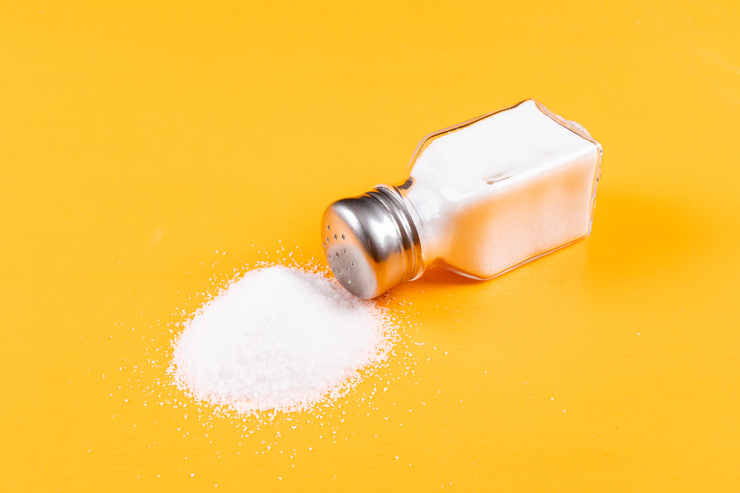Russian road authorities, advocating for safety, pour tons of salty slurry onto the streets and highways, which not only worsens the already tense environmental situation in megacities, but also leads to accelerated corrosion of cars. But before, the problem of slippery winter roads was solved differently. Yes, salt. Only it was not added to the road, but to the tires. And cheap, and practical, and everything is good for the environment. How, by whom, why and for what it was done, says the AvtoVzglyad portal.
When winter sets in and the roads are covered with snow and ice, road builders begin an active fight against this phenomenon. However, as a rule, this technique using special reagents is effective only if there are so many reagents that they completely remove all traces of snow and ice from the asphalt.
And if not, they can cause the problem we know as slash scheduling. Another disadvantage of using this technology is environmental damage. But are there other solutions to keep the tire in good contact with the road, without damaging the environment and the citizen’s budget? Yes there is! More precisely, they were.
Like any decent enterprise related to the automotive industry, the Tire Industry Research Institute (NIIShP) had its own racing team during the Soviet era. And when NIISHP developed the first in the USSR radial tire with a textile crusher IYa-170 in the early 70s, it immediately appeared on racing cars. Moreover, it showed good results. However, the NIISHP engineers decided to help their athletes and modified the tread pattern to better adhere to the snow. The result was phenomenal: the factory team’s rally drivers became inaccessible to rivals.
The special tire was named “NIIShP-Rally” and continued to be worked on. Look especially for softer recipes. So there was a variety of “NIIShP-Rally” with a hardness of the rubber compound on the Shore scale of 40 units. That is, if a person squeezed a tread block with his fingers, it literally flattened like soft plasticine. Such tires worked phenomenally on ice surfaces and left black marks on the ice (although they didn’t last long at all).
But the progress didn’t stop there. The so-called salty NIISHP appeared. When “baking” such a wheel, salt was added to the rubber compound, which was washed out of the tread structure upon contact with ice or snow. As a result, even with very active skidding, the contact surface of the tire did not “fade”, but remained rough. In addition, these wheels made it possible to start efficiently, as the salt particles melted the ice, making the tire appear to be embedded in the surface and providing extra traction.
The question arises why these types of technologies are ignored by manufacturers today? Lost the secret of making? No, just now the approach to making tires has changed slightly. And if earlier they were the result of human inspiration, now they are more likely the work of artificial intelligence and the result of a large amount of computer modeling. In addition, tire manufacturers are trying not only to improve the handling and noise characteristics of their products, but also to increase their resources. And the release of “salty” tapes does not allow to achieve the latter.
When winter sets in and the roads are covered with snow and ice, road builders begin an active fight against this phenomenon. However, as a rule, this technique using special reagents is effective only if there are so many reagents that they completely remove all traces of snow and ice from the asphalt.
And if not, they can cause the problem we know as slash scheduling. Another disadvantage of using this technology is environmental damage. But are there other solutions to keep the tire in good contact with the road, without damaging the environment and the citizen’s budget? Yes there is! More precisely, they were.
Like any decent enterprise related to the automotive industry, the Tire Industry Research Institute (NIIShP) had its own racing team during the Soviet era. And when NIISHP developed the first in the USSR radial tire with a textile crusher IYa-170 in the early 70s, it immediately appeared on racing cars. Moreover, it showed good results. However, the NIISHP engineers decided to help their athletes and modified the tread pattern to better adhere to the snow. The result was phenomenal: the factory team’s rally drivers became inaccessible to rivals.
The special tire was named “NIIShP-Rally” and continued to be worked on. Look especially for softer recipes. So there was a variety of “NIIShP-Rally” with a hardness of the rubber compound on the Shore scale of 40 units. That is, if a person squeezed a tread block with his fingers, it literally flattened like soft plasticine. Such tires worked phenomenally on ice surfaces and left black marks on the ice (although they didn’t last long at all).
But the progress didn’t stop there. The so-called salty NIISHP appeared. When “baking” such a wheel, salt was added to the rubber compound, which was washed out of the tread structure upon contact with ice or snow. As a result, even with very active skidding, the contact surface of the tire did not “fade”, but remained rough. In addition, these wheels made it possible to start efficiently, as the salt particles melted the ice, making the tire appear to be embedded in the surface and providing extra traction.
The question arises why these types of technologies are ignored by manufacturers today? Lost the secret of making? No, just now the approach to making tires has changed slightly. And if earlier they were the result of human inspiration, now they are more likely the work of artificial intelligence and the result of a large amount of computer modeling. In addition, tire manufacturers are trying not only to improve the handling and noise characteristics of their products, but also to increase their resources. And the release of “salty” tapes does not allow to achieve the latter.
Source: Avto Vzglyad
Donald Salinas is an experienced automobile journalist and writer for Div Bracket. He brings his readers the latest news and developments from the world of automobiles, offering a unique and knowledgeable perspective on the latest trends and innovations in the automotive industry.














